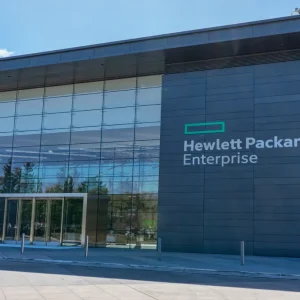
CBR Q: Last month, you agreed to be bought by Vista Equity for $4.3bn. What was your thinking behind that?
The logic of course is that it allows Tibco to run as an independent company and provide the ability to fulfil its mission, to solve some of the world’s biggest and most complicated data, integration and analytic problems. It’s certainly a good outcome for shareholders and it represents a really good next step for the entire Tibco team and its journey. So from that perspective, we’re looking forward to the closure and the successful next step. It represented a nice premium to Tibco shares, like a 26% premium, so purely financially speaking, it was a good outcome for shareholders.
CBR Q: So how do you explain Tibco’s declining software revenue and 25% drop in share price in the last year?
We’ve acknowledged certain operational weaknesses and different geographies have performed at different levels. Different product lines have performed at different levels over time. The end result has not been the kind of growth that we liked and the kind of profitability growth that we’d like as well. This partially led to the board forming a strategic committee that we announced back in the summer and the exploration of different alternatives and then ultimately the sale and privatisation to Vista so that we as a company can go work through the strategic transition that we need as a private company rather than a public company.
CBR Q: Tibco paid $185m to acquire Jaspersoft, which is best known for its low-cost open source ETL and reporter software, in April. How does the Tibco Jaspersoft software alongside the Tibco Spotfire deliver?
We have some of the most modern and functionally rich assets of any company and it’s the result of five acquisitions over the last seven years that have created this asset base in analytics. The tools themselves are remarkably powerful individual categories. They’re each different and solve different problems, and so finding ways to help each tool be stronger as a result of being near the other is the real puzzle that we have to go solve.
Spotfire is referred to as a data discovery analysis and visualisation tool and it appeals to a data analyst or scientist, whose job it is to be deeply involved in the data and to use that data to help make bigger business predictions and decisions.
On the other hand, Jaspersoft is an embeddable reporting and analytics tool, meaning that it can be integrated into other software. This allows the reports and the analysis to become visible and usable inside of other software, which is very valuable if you want to embed analytics within the software you’re already using.
They’re each tools that allow for certain uses within customers that are distinct and the challenge becomes how do we use one tool to help the other tool be more capable in its chosen category.
CBR Q: According to Gartner’s Magic Quadrant, Spotfire struggles to create a large complex report from various data sources outlined a couple cautions, while other customers cited a lack of support and s high costs. Do you agree and how are you addressing this?
I don’t think you’ll ever get a survey from any company that says the support is perfect. Depending on where you are in the world and what kind of customer, it’s going to vary, and that’s unfortunate. We work really hard in support and we gather tonnes of data that help us know how we’re doing, how many days does it take to close a case, how many cases are closed per day per month. While we’re always seeking to improve, I don’t think it’s avoidable, it’s going to happen.
As for the areas of the tool that need to be improved – this is precisely why the acquisition of Jaspersoft is so important because you really would not use Spotfire to quickly produce a report. You would use Jaspersoft to quickly produce a report….So rather than trying to make Spotfire into a reporting tool, which would be nonsensical, why not use Jaspersoft to help Spotfire be better, and that’s exactly what we’re doing.
So for the customers that have those concerns – it’s just a matter of time as we allow the tools to interoperate in ways that will be beneficial. One will help the other.
CBR Q: How do you find competing with other BI and analytics platform providers, such as Qlik and Tableau, whose data discovery and visualisation capabilities are becoming increasingly popular?
The analytics software sector is among the most competitive in all of software. And the competitors you cited are good. They’re not great but they’re good, so what we have to do is focus on being the best at analytics that we can be.
While Tableau is good at a certain set of analysis and visualisation tasks, there is a lack of breadth. If you think about Spotfire alone, Tableau is a fraction of Spotfire, meaning that it doesn’t cover the functionality that Spotfire does. So we have Spotfire which is already broader than Tableau, and then you add Jaspersoft, and this is valuable for customers. I spent the morning with three different companies in London and each of them is looking for that. They want to have a fewer set of relationships that could provide them with a broader set of functionality. They don’t want to have 10 vendors, they don’t want to have Qlik, Tableau, Cognos and MicroStrategy.
CBR Q: Don’t Oracle and IBM provide a similar kind to package?
I would say that Oracle have a closer array of tools. They’re not very modern, they’re quite ageing but admittedly they have a broad set of tools. I mean some of the tools that Oracle have are more than 30 years old. When you have older tools, it’s harder to keep up. When you have tools that are built to a different era, it’s harder for those tools to solve modern problems. Yes you can do it, but it doesn’t do it as elegantly. I mean installing Oracle’s tools could take days, whereas ours takes a fraction of that time. I mean they’re huge, because all the time, the code gets bigger and bigger and bigger. You never go back and pull code out, it’s like luggage.
CBR Q: Do you see any challenges going forward in the BI space and if so how do you plan to overcome them?
The competitiveness is always one. You’ve got to be incredibly distinct because there are so many possibilities. Most of them are very narrow choices but they all have some merit. You cited a few but there are hundreds and it seems like it grows every week. So the message about our ability to provide broader more modern features is compelling, and our biggest challenge is making sure the world knows, so when they’re looking at one of these narrow tools, they might think of us.
CBR Q: To what extent do you think analytics will move to the cloud?
We’ve seen a great growth in the number of consumers that are consuming in that way.
I think we’ll see fast growing consumption in the cloud that several years from now will probably be the most popular way to analyse data. Increasingly, instead of just buying it and installing it on their own servers, they’re just going to use it as a service. We’ve seen this migration over the last few years, and it will grow and you’ll see fast growth of the use of analytics as a service rather than installing and owning it on premise. In a few years, so I wouldn’t be surprised if as much as 50% of analytics was in the cloud.






